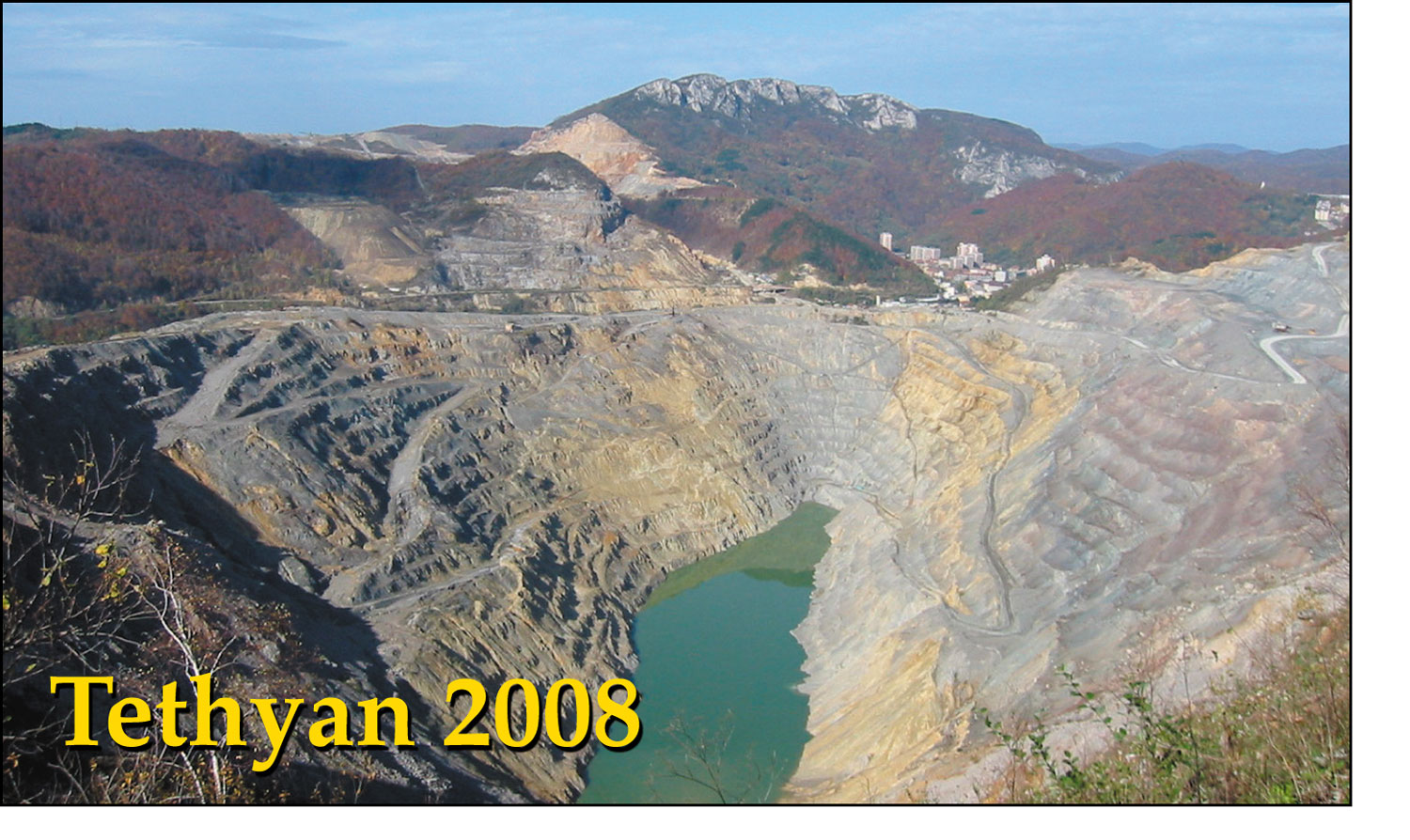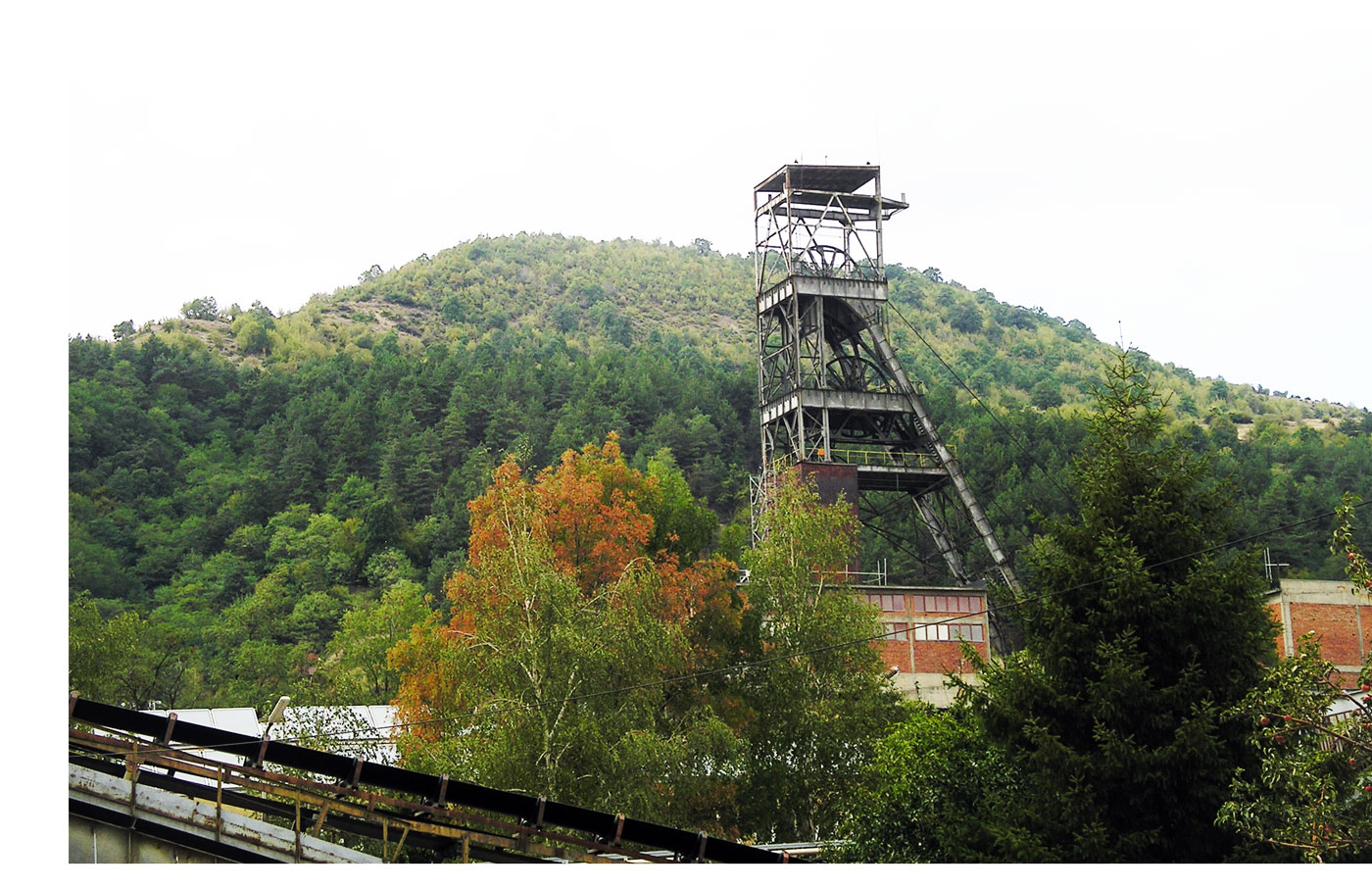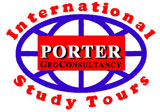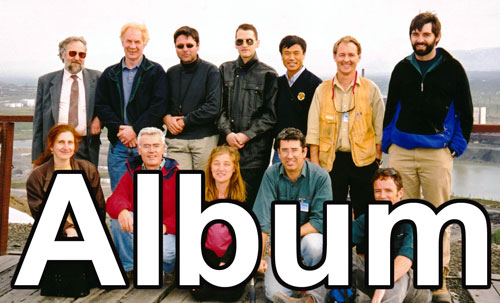| |||||||||||
|
Tethyan 2008 Gold & Copper in the Western Tethyan Belt 22 September to 2 October 2008 | |||||||||||
|
| |||||||||||

Porter GeoConsultancy continued its International Study Tour series of professional development courses by visiting a representative selection of the most significant epithermal and porphyry gold and copper deposits in the western Tethyan Belt of southeastern Europe.
This included a diverse selection of deposits in Bulgaria, Serbia, Romania and Greece, supported by context setting regional expert overview classroom and field workshops. The tour commenced in Sofia, Bulgaria on the evening of Sunday 21 September and ended in Thessoaloniki, Greece on the evening of Thursday 2 October, 2008. Participants were able to take any 4 or more days, up to the full tour, as suited their interests or availability. A full day symposium, titled the 'Balkans Exploration Conference', was convened in association with the SE Europe Geoscience Foundation at the beginning of the tour to provide context to the tectonic, geological and metallogenic setting of the mineral deposits of the western Tethyan belt in the Balkans. It also provided an opportunity for tour participants to network and interact with a wide cross-section of local experience. The western Tethyan, or Alpine-Balkan-Carpathian-Dinaride (ABCD) Province of the Balkans is part of the greater Tethyan (or Alpine-Himalayan) orogenic system that extends from Morocco in northwest Africa, through western Europe to southern and southeast Asia and resulted from the convergence and collision of the Indian, Arabian and African plates with Eurasia. This on-going collision was for the greater part initiated during the Cretaceous. The complex geometry of the collision interface and the presence of several microplates within the orogenic collage resulted in a variety of collision products, notably some segments characterised by extensive regional metamorphism and others by calc-alkaline igneous activity. This segmentation has resulted in the discontinuous distribution of mineral deposits within the province and a limited lateral extent of the various metallogenic belts along the trace of the orogen. While magmatic activity is evident within the western Tethyan from the Cretaceous to the present, two overlapping, arcuate segments have been delineated representing the bulk of the magmatism, namely: i). The more economically significant eastern zone, which comprises 90 to 60 Ma, Late Cretaceous, subduction-related intrusive and volcanic rocks, forming an 'L'-shape (concave to the east) extending from Bulgaria, through Serbia and into Romania. This zone hosts deposits such as the Moldova Noua porphyry Cu in Romania, Majdenpek and Veliki Krivelj porphyry Cu-Au and Bor porphyry/epithermal Au-Cu in Serbia, and the Elatsite, Medet and Assarel porphyry Cu and Chelopech epithermal Au deposits in Bulgaria. Temporal variations in the ages of mineral deposits within this belt are attributed to variations in convergence direction relative to the geometry of the active margin. Specifically, the deposits in south-western Romania, eastern Serbia and in central Bulgaria have been dated at 77, 85 and 91 to 80 Ma respectively. ii). A parallel western arc to the north-west, where Late Miocene activity predominates, hosting deposits such as the Rosia Montana epithermal Au and the Rosia Poieni porphyry Cu-Au in Romania, and Early Miocene magmatism which is associated with the Buchim (North Macedonia) and Skouries (Greece) porphyry Au-Cu ores to the south-west of the Cretaceous arc. The tour program was as follows: Bulgaria • Chelopech - high sulphidation (acid sulphate) epithermal gold-copper deposit is located some 60 km to the east of Sofia, and is hosted by a thick Late Cretaceous volcano-sedimentary sequence. Mineralisation is present as a complex system of massive sulphide bodies, stockworks of fine sulphide veinlets, discontinuous sulphide veins and disseminations in altered wall rocks ..... Monday 22 September, 2008. • Balkans Exploration Conference - the first half of which comprised an overview of the tectonics, geology and metallogeny of the region, presented by both local and invited international experts. The second half involved a selection of the tour participants providing presentations on similar copper and/or gold deposits, exploration projects or ore provinces elsewhere in the world. ..... Tuesday 23 September, 2008. • Assarel and Medet, porphyry copper systems associated with extensive late Cretaceous calc-alkaline magmatism, both intrusive and extrusive volcano-sedimentary rocks, in the Panagyurishte district ..... Wednesday 24 September, 2008. Serbia 
• Bor and Veliki Krivelj, classroom and field workshops, and pit visits. Bor is a Cretaceous high sulphidation massive sulphide Cu-Au deposit, spatially associated with the deeper Borska Reka porphyry style mineralisation in the Timok Mountains of eastern Serbia, ~150 km SE of Beograd (Belgrade). Veliki Krivelj comprises porphyry style mineralisation, ~3 km NE of Bor, hosted by hydrothermally altered Upper Cretaceous sub-volcanic hornblende andesite and pyroclastic equivalent breccias, tuffs and agglomerates as well as the Upper Cretaceous volcano-sedimentary series of pelites and limestones ..... Thursday 25, Friday 26 and Saturday 27 September, 2008. Romania • Rosia Montana and Rosia Poieni. Rosia Montana is an intermediate-sulphidation, epithermal gold deposits within the Apuseni Mountains of the Transylvanian Region, immediately to the north of the city of Deva. It is associated with, and hosted by, a Miocene polymict 'vent breccia' of a maar-diatreme complex, emplaced into Cretaceous flysch-type sedimentary rocks, and intruded by rhyodacite to dacite domes. Rosia Poieni is a porphyry copper-gold deposit ~4 km ENE of Rosia Montana, hosted by mid-Miocene to Pliocene andesitic-dacitic volcanic and sub-volcanic rocks ..... Monday 29 and Tuesday 30 September, 2008. Greece • Skouries porphyry Au-Cu deposit, hosted by an Oligocene sub-alkaline porphyry stock in the Kasandra Mining District of Chalkidiki Province, ~100 km east of Thessalonika, north-eastern Greece; and the nearby Olympias replacement Au-Ag-Pb-Zn mineralisation hosted in Palaeozoic marbles ..... Thursday 2 October, 2008. The tour was planned, organised, managed and escorted by Mike Porter of Porter GeoConsultancy Pty Limited. See the photo album, linked above, for more detail. Images above: Top - Majdanpek Open Pit, Serbia; Lower - Chelopech headframe, Bulgaria | |||||||||||
| |||||||||||
|
| |||||||||||












